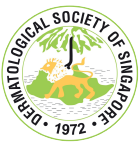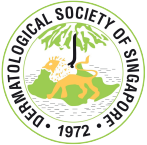Global Dermatology
Contributions from WCD2023 Ambassadors
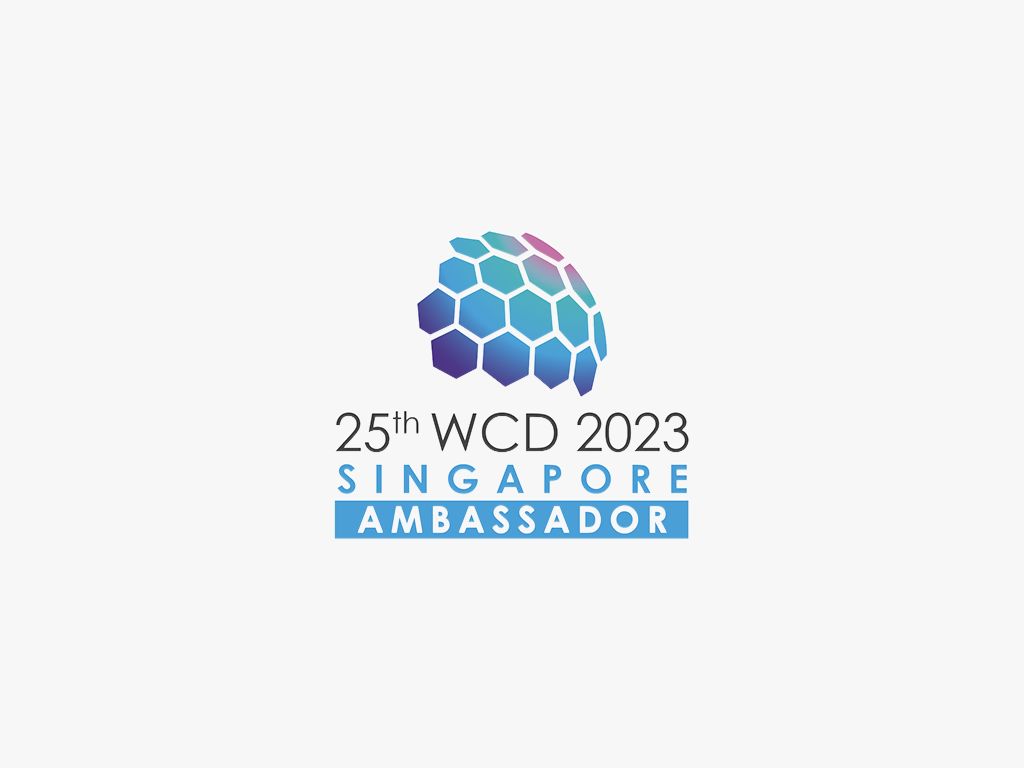
Collection of articles about dermatology from all over the world. A dermatology beyond borders.
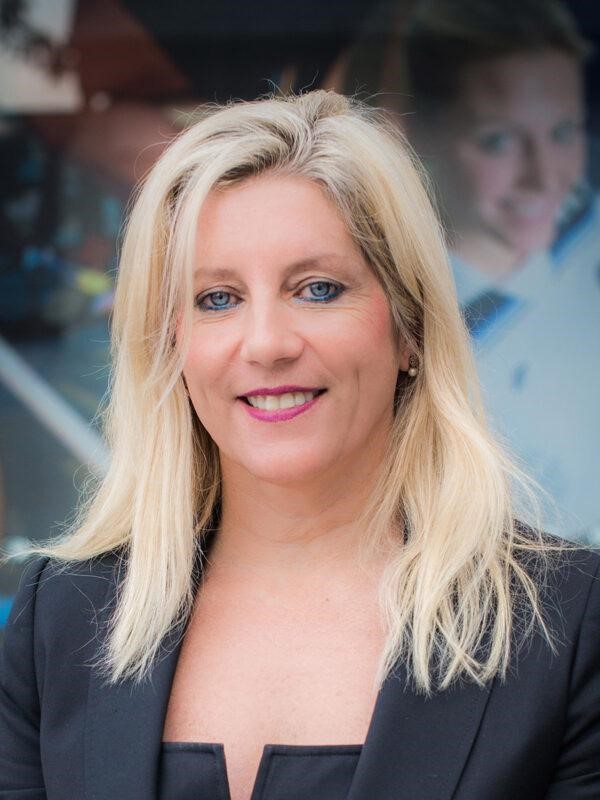
The Impact of COVID-19 on Dermatology practice in Australia: Experience in Sydney.
Dr Genevieve Ho – Dermatology Research Fellow, Melanoma Insitute Australia. Prof Dedee Murrell- Chair, St George Hospital, UNSW, Sydney & Ambassador for WCD 2023 Singapore.
Introduction
The first case of COVID-19, caused by the SARS-CoV-2 virus was first identified in Wuhan, China at the end of 2019, which rapidly progressed to being declared a worldwide health emergency in March 2020. Since then, many countries have had differing experiences of how the pandemic has unfolded. Countries that were previously deemed to have infallible preparedness have had health systems brought to their knees. In Australia, we have been spared the large numbers of cases seen overseas. Compared to the 28 million cases seen in the United States, Australia has had ljust over 30,000 cases reported cases as of May 30th 2021.
Change measures in hospitals
As the case numbers started to rise in Australia in March 2020, many health departments, hospitals and private practices scrambled to restructure clinical practice to minimise spread, and ensure the safety of patients and staff. Unlike Singapore, Australia did not have a dedicated infectious disease centre housing suspected cases. Positive cases were present in almost all tertiary hospitals. Dermatology departments still ran, although it was unclear for a time-being whether or not we would be ‘re-purposed’ to help with COVID-19 cases, as seen in other countries.
Major structural changes occurred in the initial stages. In the public hospital, outpatient clinics were transitioned to teledermatology. For a period of one month, we did not see new, non-urgent referrals. Waiting rooms were spaced in accordance with social distancing rules, and personal protective equipment in the form of masks and gloves were mandatory. We had to use these judiciously however as initially these were in short supply as many had been shipped to China. It took a while for hospitals to initiate restrictions on entry to the buildings before the tracking apps were developed.
Inpatient consults continued, however the numbers of these were reduced compared to previous years. Patients were assessed via teledermatology if the case was deemed suitable (awaiting COVID swab or non-urgent consult). The importance of triage was stressed, as was our reliance on technology, such emailed photos from patients, messages or phone calls from other teams within the hospital. We have recently published our audit findings (1), of the inpatient consults made to the department of Dermatology at St George Hospital- a tertiary teaching hospital in Sydney, Australia.
Private practice
In private practice, we were also heavily reliant on teledermatology, and ensured patients were consented for this. Medical scripts were faxed or emailed to pharmacies, and the government changed its policy to enable general practitioners, to prescribe electronically using applications, SMS, or email in the form of a link to a unique QR code. Patients who had to be seen in person were screened for symptoms and socially distanced on arrival (2). Cosmetic procedures and non essential surgery were suspended by the government.
Hence, some clinics halted all face-to-face consultations altogether, and resumed them only when case numbers started to reduce. Higher-risk patients, for example at the Melanoma Institute, were assessed via teledermatology, and told to present in person if needing an urgent assessment or procedure.
Trials and educational events
We have also experienced major changes in clinical trial procedures. This has involved contingency planning, reduction of new subject recruitment and maximising patient safety at all times (3). Educational events such as medical grand rounds, teaching sessions, and of course scientific conferences all moved to a virtual model. However face to face grand rounds and teaching with social distancing have resumed.
Government action
Our experience in Australia has been a fortunate one, largely due to government actions at both state and national levels to limit the spread of COVID-19. In 2020, we saw universal self-isolation for returned travellers in March and strict border closures between states. States have managed to restrict numbers due to lockdown measures; in New South Wales, we have been fortunate to avoid further lockdown following the very initial stages in March 2020. On a national level, The National Cabinet was formed on the 13th of March 2020. Comprising the prime minister, premiers and chief ministers, it met regularly to coordinate a swift, coordinated and united response to the pandemic. This action from the government was welcomed by many, held in the same esteem as the War Cabinet during the Second World War. The government also successfully kept much of the Australian economy alive, introducing JobSeeker and JobKepper, the latter of which has allowed us to retain part time staff in dermatology practices. The government also facilitated telehealth, with introduction of telehealth Medicare Billing codes. The National Cabinet now faces the challenge of the vaccination rollout, which will be essential if healthcare is to return at all to normality.
International Travel
Only Australian citizens and permanent residents can return from living abroad with limits on daily arrivals based on places in designated quarantine hotels. Arriving travellers have to pay for 14 days of quarantine. A travel ‘bubble’ without quarantine recently began with New Zealand. Approximately a third of Australians were born overseas and many are getting frustrated that they cannot leave to visit or support relatives abroad, nor bring them here to support them. Domestic travel has blossomed as a result of this.
Concluding remarks
Our experience in Australia has been a fortunate one. The government has implemented many measures, such as telehealth, which will no doubt be here to stay. COVID-19 has made what is likely to be a lasting impact on dermatology practice. To summarise the experience in its entirety would not be possible in a single article. Furthermore, the story of COVID-19, its impact and repercussions on health systems across the world is still unfolding.
References
1. Ho, G. Blake,, SC. Sheriff, T. Daniel, BS, Murrell, DF. (2021) Impact of COVID-19 on dermatology consults in an Australian tertiary hospital. Australasian Journal of Dermatology. (Article in press)
2. Sheriff T, Murrell OG, Murrell DF. Restructuring an academic dermatology practice during the COVID‐19 pandemic. Dermatologic Therapy. 2020 Jul;33(4):e13684
3. Sheriff T, Dickenson-Panas H, Murrell DF. Conducting dermatology clinical trials during the COVID-19 pandemic. Clinics in Dermatology. 2020 Dec 16.

WORLD CONGRESS OF DERMATOLOGY SINGAPORE 2023
Centuries of Dermatology at University Hospital “Saint Louis” – Paris, France
Marius-Anton IONESCU, MD, PhD*
*Dermatology Outpatient Clinic – Dermatology Department, University Hospital “Saint-Louis, University of Paris, France
dr.toni.ionescu@gmail.com
Saint Louis Hospital was created in 1607 by the King of France Henri IV to unclog Parisian hospitals during the epidemic of plague in 1605-1606, he gave it the name of Saint-Louis in memory of his ancestor King Louis IX.
Today, Saint-Louis Hospital uses its historic building that is a classified historic monument for administrative activities (Figure 1-4). Since the 1980s a modern building hosts all the Departments of the University Hospital (Fig 5). Main departments of the hospital are dermatology, oncology, hematology, plastic and reconstructive surgery. Saint-Louis Hospital employs 2,500 people, it houses also several research institutes, among them Inserm U976 dedicated to dermatology, hematology, oncology. Saint Louis Hospital hosts also the non-profit Foundation “René-Touraine”.
Saint Louis Hospital is known for its long tradition in hematology (first bone marrow transplant in 1958 – Dr Georges MATHE, Prof Jean BERNARD; Nobel Prize in Medicine 1980 – Prof Jean DAUSSET), the hospital is famous for its rich activity in dermatology care and research in onco-dermatology but also for its long tradition of teaching in dermatology and venereology. Great physicians have practiced their art over the last 4 centuries, many professors and clinicians from Saint-Louis Hospital have signed publications and developed manuals of dermatology translated on 5 continents. Many of dermatologists from Saint-Louis observed and discovered clinical signs and skin diseases that still bear their names: Jean-Louis-Marc ALIBERT, Jean Guillaume Auguste LUGOL, Laurent-Theodore BIETT, Pierre-Antoine-Ernest BAZIN, Pierre Louis Alpheus CAZENAVE , François Henri HALLOPEAU, Léon LORTAT-JACOB, Henri-Alexandre DANLOS, Ernest BESNIER, Jean Baptiste Emile VIDAL, Ferdinand-Jean DARIER, Louis BROCQ, Bernard Felix DUPERRAT, Gaston Auguste MILIAN, Albert SEZARY, Achille CIVATTE, Raymond SABOURAUD, Henri GOUGEROT , Albert TOURAINE, Arnault TZANCK, Robert DEGOS etc.
The library “Dr Henri Feulard” – now the Wax Museum in Dermatology (Fig.6, 7) – was a former teaching school of dermatology since 1867, a fascinating place that houses the world’s largest collection of wax casts dedicated to teaching of skin and venereal diseases (4807 pieces). The library next to the museum contains numerous ancient works of dermatology and sexually transmitted diseases. The recently renovated museum hosts national and international dermatological meetings and also is the place of the weekly staff of the dermatology department of the hospital.
Since 2009 the Head of the Dermatology Department is Mrs Professor Martine BAGOT, MD, PhD. The Dermatology Department provide skin care in two hospital areas with 18 beds each (total of 36 beds), and a in a day hospital with 10 beds for patients with inflammatory and dysimmune dermatoses, including a special room with a bathtub for the management of severe genodermatoses. Dermatology Department is a reference center for genodermatoses and a competence center for autoimmune bullous diseases.
The Onco-Dermatology Expert Center has a 9-bed day-hospital and treats all types of skin tumors, particularly melanomas, carcinomas, sarcomas and cutaneous lymphomas.
Dermatology Department is also the National Reference Center for Cutaneous Lymphomas, providing 4 Multidisciplinary Consultation Meetings (MCM), a national MCM for cutaneous lymphomas, and a multidisciplinary PATIO MCM for the diagnosis and treatment of side-effects of new targeted therapies and immunotherapies of cancers.
Dermatology Outpatient Clinic provides 54,000 consultations per year with general dermatology consultation and also focused consultations on atopic dermatitis, psoriasis, hand dermatitis, hidradenitis suppurativa, internal medicine / dermatology, bullous diseases, keloids, angiomas, leprosy, genodermatoses, medical mycology.
Sexual Transmitted Diseases Center provides anonymous and free screening-services through focused consultations in venerology and for the pathology of mucosae.
The surgical activity of the Dermatology Department is made within the Center of Dermo-Surgery.
A technical platform includes an allergology consultation, a Laser center, a Phototherapy Center (PUVA, UVB, UVB-nb, UVA1, bath-PUVA, photobiology investigation), a Photodynamic Therapy Unit, a Fotofinder diagnosis, and a Confocal microscopy unit.
Dermatology Department works in close collaboration with the Sabouraud Center (based in the same Hospital), dedicated to the investigation and treatment of the scalp diseases.
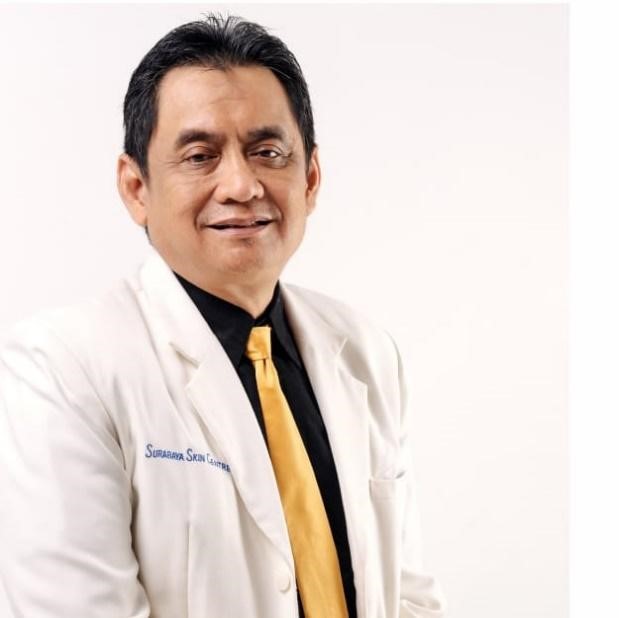
M. Yulianto Listiawan, MD, PhD
Hello, greetings from Indonesia.
I am M. Yulianto Listiawan, chairman of the Indonesian Society of Dermatology and Venereology. It is a pleasure for us to be able to join and take part in the 25th World Congress of Dermatology which will be held in Singapore.
To begin with, Indonesia is a very large archipelagic country, with population of more than 260 million people, and consists of more than 17,000 islands. Indonesia is also a neighbor and friend of Singapore for a long time.
Currently in Indonesia there are only about 2000 dermatologists from 13 dermatology education centers throughout Indonesia. To become a dermatologist in Indonesia, a doctor must complete 6 years of general practitioner education and continue his specialist education for 3.5 years. From the demographic data above, we can see that the number of dermatologists in Indonesia is still very far from the ideal ratio recommended by the American Academy of Dermatology, which is a ratio of 3.5 per 100,000 population.
In addition, another challenge that becomes a concern is the uneven distribution of dermatologists throughout Indonesia. Dermatologists are mostly concentrated in big cities, and there is even a province at the eastern end of Indonesia that only has less than 10 dermatologist. Therefore, the fulfillment of health services in dermatology is still a big challenge for us.
Indonesia still ranks third for leprosy cases, even though Indonesia has entered the WHO leprosy elimination target since 2000. In terms of neglected diseases, Indonesia occupies the highest scabies case in the world. Even though there have been many breakthroughs made by dermatologists and the government in collaboration, these two tropical infectious diseases are still a chore for Indonesia. On the other hand, people’s demand of aesthetics and cosmetic dermatology is also increasing every year, so that dermatologists, mostly are more concentrated in pursuing cosmetic dermatology compared to other fields.
Finally, on behalf of the Indonesian Society of Dermatology and Venereology, I would like to congratulate the committee on organizing this 25th WCD event. I hope that this event will provide a lot of additional knowledge and share experiences that are useful for all of us, especially in overcoming the challenging conditions that are still being faced in Indonesia today. I also hope that this COVID-19 pandemic will end soon and we can meet face to face in Singapore in 2023. Thank you and stay safe and healthy!
Warm regards,
M. Yulianto Listiawan, MD, PhD
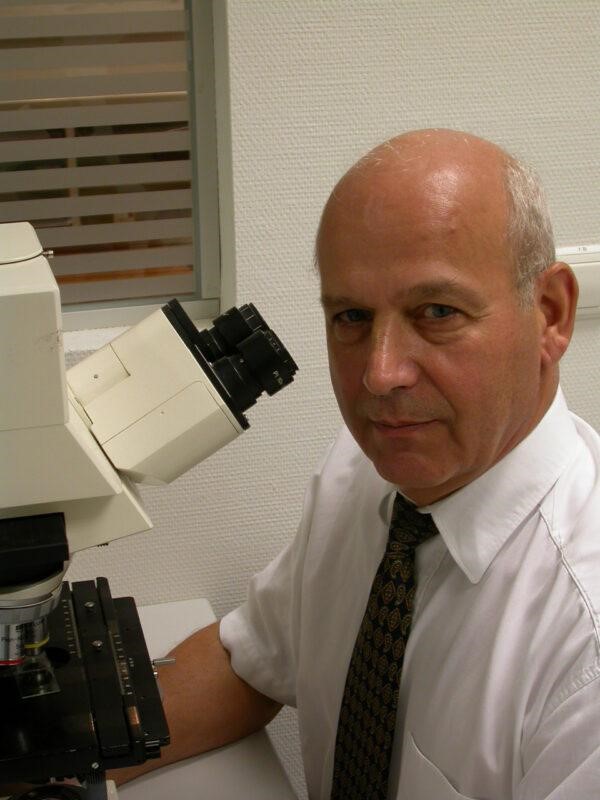
COVID-19 and the Nails
Eckart Haneke
Dermatology Practice Dermaticum
Department of Dermatology, Inselspital, University of Berne, Bern, Switzerland Centro de Dermatología Epidermis, Instituto CUF, Porto, Portugal
COVID19 has dominated dermatology in the last 18 months. Dermatology was shrunk to a minimum in many countries. Patients were often afraid to go to their physician for whatever reason. Newspapers, TV news and shows, medical and also scientific journals were full of corona. Live meetings were cancelled practically everywhere and gradually substituted by virtual conferences. In our consultation with nail diseases as a focus, we expected a standstill or at least an important slowdown. We were, however, surprised that after March and April 2020 patients came back for their nail problems. Some consultations were made by telemedicine, but I was astonished how few patients took this opportunity.1
In my work, which I carry out as a part-time partner of a private dermatology practice in Freiburg Germany, COVID19 preventive measures were instituted and actually infected patients were not seen. So, I tried to keep informed by paying attention to what was available in the medical literature and by discussing the issue with colleagues. As a senior, I tried to get vaccinated but had to wait until April 2021 for the first shot of an RNA vaccine. Now being fully vaccinated life has become easier again, both professionally as well as privately.
Nail consultations have resumed almost as before. The practice staff and patients got used to the restrictions imposed on all of us by the local authorities and government. I continue to see fungal nail infections, dystrophic changes in the asymmetric gait nail unit syndrome, psoriasis, lichen planus and all the other conditions affecting the nails. Ingrown nails are operated as usual and nail tumors continue to be treated.
In a pubmed search for what has been published concerning nails and covid, some articles dealt with the treatment of certain nail conditions in the era of COVID19.2,3,4 Most skin and particularly nail conditions can be treated as before since their therapy does not increase the potential risk to get a particularly severe infection or to increase the complication rate. COVID19 may have an indirect influence on the nail as shown by the appearance of an orange halfmoon in front of the lunula, Beau’s lines or onychomadesis after the infection.5,6,7,8,9,10,11 Mees’ lines were thought to have been due to a temporary disturbance of nail formation during a COVID19 infection.12 Non-specific nail fold capillary alterations were seen in nearly two thirds of patients with COVID19 pneumonia. These changes consisted of pericapillary edema, enlarged capillaries, sludge flow, meandering capillaries and reduced capillary density.
Acute COVID19 patients showed a higher prevalence of hemosiderin deposits as a result of micro-hemorrhages and micro-thrombosis, sludge flow, and pericapillary edema, while recovered patients showed a higher prevalence of enlarged capillaries, loss of capillaries, meandering capillaries ,and empty dermal papillae.13 The nails may harbor coronavirus and nail hygiene is important.14 Frequent hand washing may predispose to nail colonization with Pseudomonas aeruginosa called the green nail or Goldman-Fox syndrome.15 Covid toes became a much disputed issue and only now does it appear clear that they are not directly linked to coronavirus infection as most if not virtually all patients tested coronavirus-negative; however, their exact etiopathogenesis is still an enigma.16,17,18,19 The role of nail salons as potential spreading locations was also examined. It was shown that increased outdoor airflow rates and the use of face masks by both employees and customers could substantially reduce SARS-CoV-2 transmission in New York City nail salons.20
A safe and effective pharmacotherapy of COVID19 infections is still not established. Faviparivir is one among many promising drugs inhibiting an RNA-dependent viral RNase,21 which however, still await confirmation in randomized controlled double-blind studies. The drug is incorporated into hair and nail and gives a bright greenish fluorescence equaling the period of administration.22
References
1 Chang MJ, Stewart CR, Lipner SR. Retrospective study of nail telemedicine visits during the COVID-19 pandemic. Dermatol Ther 2021;34:e14630
2 Lipner SR, Iorizzo M, Jellinek N, Piraccini BM, Scher RK. Considerations for management of longitudinal melanonychia during the coronavirus disease 2019 (COVID-19) pandemic: An international perspective. J Am Acad Dermatol 2020;83:e159-e161
3 Ricardo J W, Lipner SR. Recommendations for treatment of nail psoriasis during the COVID-19 pandemic. Dermatol Ther 2020;33(4):e13757.
4 Ricardo JW, Lipner SR. Recommendations for treatment of nail lichen planus during the COVID-19 pandemic Dermatol Ther 2020;33(4):e13551
5 Méndez-Flores S, Zaladonis A, Valdes-Rodriguez R. COVID-19 and nail manifestation: be on the lookout for the red half-moon nail sign. Int J Dermatol 2020;59:1414
6 Tammaro A, Adebanjo GAR, Erasmus HP, Chello C, Pezzuto A, Ramirez-Estrada S, Rello J. Transverse orange nail lesions following SARS-CoV-2 infection. Dermatol Ther 2021;34:e14688
7 Ide S, Morioka S, Inada M, Ohmagari N. Beau’s lines and leukonychia in a COVID-19 patient. Intern Med 2020;59(24):3259
8 Alobaida S, Lam JM. Beau lines associated with COVID-19. CMAJ 2020;192(36):E1040
9 Neri I, Guglielmo A, Virdi A, Gaspari V, Starace M, Piraccini BM. The red half-moon nail sign: a novel manifestation of coronavirus infection. J Eur Acad Dermatol Venereol. 2020;34:e663-e665
10 Senturk N, Ozdemir H. Onychomadesis following COVID-19 infection: Is there a relationship? Dermatol Ther 2020;33:e14309
11 Pineider JL, Haugh IM, Ramaciotti C, Agim NG. Kawasaki’s disease and onychomadesis in a 17-month-old girl with non-SARS-CoV2 coronavirus. Proc Bayl Univ Med Cent 2021;34(3):409-411
12 Fernandez-Nieto D, Jimenez-Cauhe J, Ortega-Quijano D, Diaz-Guimaraens B, Dominguez-Santas M, Martinez-Rubio J. Transverse leukonychia (Mees’ lines) nail alterations in a COVID-19 patient. Dermatol Ther 2020;33:e13863
13 Natalello G, De Luca G, Gigante L, Campochiaro C, De Lorenzis E, Verardi L, Paglionico A, Petricca L, Martone AM, Calvisi S, Ripa M, Cavalli G, Della-Torre E, Tresoldi M, Landi F, Bosello SL, Gremese E, Dagna L. Nailfold capillaroscopy findings in patients with coronavirus disease 2019: Broadening the spectrum of COVID-19 microvascular involvement. Microvasc Res 2021;133:104071
14 Wu AG, Lipner SR. A potential hidden reservoir: The role of nail hygiene in preventing transmission of COVID-19. J Am Acad Dermatol 2020;83:e245-e246
15 Schwartz RA, Kapila R. The Goldman-Fox syndrome: Treating and preventing green pseudomonas nails in the era of COVID-19. Dermatol Ther 2021;34:e14624
16 Diociaiuti A, Giancristoforo S, Terreri S, Corbeddu M, Concato C, Ciofi Degli Atti M, Zambruno G, Carsetti R, El Hachem M. Are SARS-CoV-2 IgA antibodies in paediatric patients with chilblain-like lesions indicative of COVID-19 asymptomatic or paucisymptomatic infection? J Eur Acad Dermatol Venereol 2021;35:e10-e13
17 Lesort C, Kanitakis J, Donzier L, Jullien D. Chilblain-like lesions after BNT162b2 mRNA COVID-19 vaccine: a case report suggesting that ‘COVID toes’ are due to the immune reaction to SARS-CoV-2. J Eur Acad Dermatol Venereol. 2021 Jun 16. doi: 10.1111/jdv.17451
18 Sachdeva M, Mufti A, Maliyar K, Lara-Corrales I, Salcido R, Sibbald C. A review of covid-19 chilblains-like lesions and their differential diagnoses. Adv Skin Wound Care 2021;34:348-354
19 Discepolo V, Catzola A, Pierri L, Mascolo M, Della Casa F, Vastarella M, Smith G, Travaglino A, Punziano A, Nappa P, Staibano S, Bruzzese E, Fabbrocini G, Guarino A, Alessio M. Bilateral chilblain-like lesions of the toes characterized by microvascular remodeling in adolescents during the covid-19 pandemic. JAMA Netw Open 2021;4(6):e2111369
20 Harrichandra A, Ierardi AM, Pavilonis B. An estimation of airborne SARS-CoV-2 infection transmission risk in New York City nail salons. Toxicol Ind Health 2020;36:634-643
21 Coomes EA, Haghbayan H. Favipiravir, an antiviral for COVID‐19? J Antimicrob Chemother 2020;75:2013‐2014
22 Aslan Kayıran M, Cebeci F, Erdemir VA, Aksoy H, Akdeniz N, Gürel MS. Fluorescence of nails and hair on Wood’s lamp examination in Covid pandemic; undefined effect of Favipiravir in humans. Dermatol Ther 2021;34:e14740

